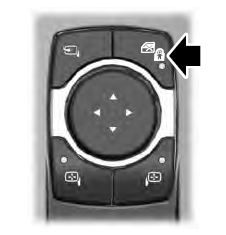Lincoln Aviator 2020-2025 Service Manual / Electrical / Climate Control System / Climate Control System - General Information / General Procedures - Heater Core Leak Check - Vehicles With: R134A Refrigerant
Lincoln Aviator: Climate Control System - General Information / General Procedures - Heater Core Leak Check - Vehicles With: R134A Refrigerant
Inspection
-
NOTE: A coolant leak in the heater hose could follow the heater core tube to the heater core and appear as a leak in the heater core.
Inspect for evidence of coolant leakage at the heater hose to heater core attachments.
-
NOTE: Spring-type clamps are installed as original equipment. Installation and overtightening of nonspecified clamps can cause leakage at the heater hose connection and damage the heater core.
Check the integrity of the heater hose clamps.
-
Drain the coolant from the cooling system. Refer to
Cooling System Draining, Filling, and Bleeding procedure in Group 303.
-
Disconnect the heater hoses from the heater core.
-
Install a short piece of heater hose, approximately 101 mm (4 in) long on each heater core tube.
-
Fill the heater core and heater hoses with water and
install the plug (221373) and the adapter (221374) from the Pressure
Test Kit. Secure the heater hoses, plug and adapter with hose clamps.
.jpg) |
-
Attach the pump and gauge assembly from the Pressure Test Kit to the adapter.
-
014-R1072 Radiator Pressure Test Set
-
014-R1072 Radiator Pressure Test Set
.jpg) |
-
Close the bleed valve at the base of the gauge. Pump 138 kPa (20 psi) of air pressure into the heater core.
-
Observe the pressure gauge for a minimum of 3 minutes.
-
If the pressure drops, check the heater hose connections
to the heater core tubes for leaks. If the heater hoses do not leak,
replace the heater core.
 General Procedures - Fluorescent Dye Leak Detection - Vehicles With: R134A Refrigerant
General Procedures - Fluorescent Dye Leak Detection - Vehicles With: R134A Refrigerant
Special Tool(s) /
General Equipment
UV Leak Detector
Electronic Leak Detector
Leak detection
Vehicles with air conditioning
Review next note for important refrigerant system dye information...
 General Procedures - Refrigerant Identification Testing - Vehicles With: R134A Refrigerant
General Procedures - Refrigerant Identification Testing - Vehicles With: R134A Refrigerant
Special Tool(s) /
General Equipment
Refrigerant Identification Equipment
Activation
NOTE:
Use Refrigerant Identification Equipment to identify
gas samples taken directly from the refrigeration system or storage
containers prior to recovering or charging the refrigerant system...
Other information:
Lincoln Aviator 2020-2025 Service Manual: Description and Operation - Front Suspension - Overview
Overview The RWD front suspension consists of the following components: Front and rear lower arms Rear lower arm ball joints Stabilizer bar, bushings and links Ride height sensors (Vehicles with Continuously Controlled Damping (CCD) Suspension) Passive or dynamically controlled shock absorber and spring assembly (Continuously Controlled Damping (CCD)) Upper control arms Wheel bearings and wheel hubs Wheel knuckles Wheel studs The front suspension uses a double ball joint short long arm suspension system...
Lincoln Aviator 2020-2025 Owners Manual: Android Auto (If Equipped)
Connect your device to a USB port. Follow the instructions on the touchscreen. Note: You might need to enable Android Auto from the settings menu. Note: Certain features of the system are not available when you are using Android Auto. Switching Android Auto Off Select the settings option on the feature bar...
Categories
- Manuals Home
- Lincoln Aviator Owners Manual
- Lincoln Aviator Service Manual
- Activating Intelligent Access
- Garage Door Opener
- Locking and Unlocking
- New on site
- Most important about car
Child Safety Locks
When the child safety locks are set, you cannot open the rear doors from the inside.

The child safety lock control is on the driver door.
Press the control to switch the child safety locks on. Press the control again to switch them off. A light on the child safety control illuminates when you switch them on.
Copyright © 2025 www.liaviator2.com
